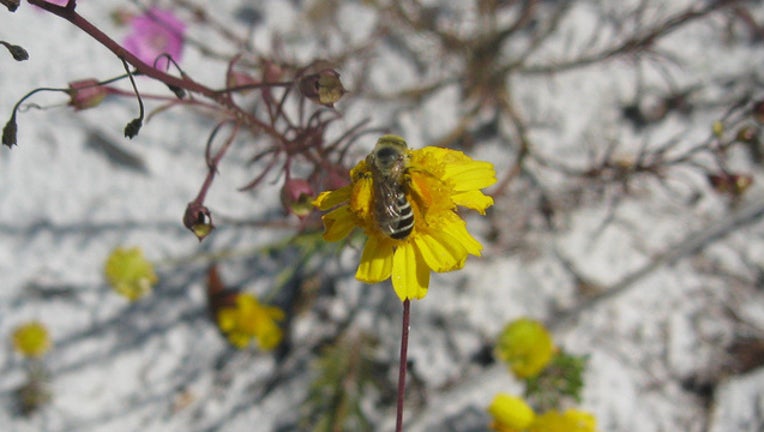Florida's Gulf Coast solitary bee may be added to endangered species list

Photo credit: Center for Biological Diversity
PENSACOLA, Fla. (FOX 13) - The population of a Florida bee is dwindling.
A national environmental organization, Center for Biological Diversity, filed a petition for the Gulf Coast solitary bee to be added to the U.S. Fish and Wildlife Service’s endangered species list, in order to obtain protection under the federal level. The native Florida bee can be found in the coastal dunes and barrier islands of Florida's northern Gulf Coast.
The organization says the bee species is a member of the oldest family of bees on Earth and the only known species of its subfamily in the eastern U.S. They were first discovered in 1993. The most recent survey count took place in 2012. Organization members said only 47 of the bees were found in six sites in the Florida Panhandle.
“It has been pushed to the brink of extinction by urbanization, pesticides and climate change-induced sea-level rise and storm surges,” said Dr. Tara Cornelisse, an entomologist’s who’s a senior scientist at the Center. “If we don’t act quickly, Florida will lose this beautiful little native bee forever.”
Back in November 2018, the organization contacted the Florida Fish and Wildlife Conservation Commission and informed the agency of their plan to petition. As a courtesy, an FWC spokesperson said they compiled all-known information on the Gulf Coast solitary bee and provided it to the federal agency.
“At this time there is no request to list this animal at the state level,” according to the FWC.
The bee is found within about 1,500 feet of the shore, making its home vulnerable to rising sea levels and storm surges. Human development and pesticide can also impact their population numbers.
"Unfortunately much of its habitat has been converted to housing and commercial development," the organization wrote in a press release.
It pollinates just one plant, the Coastal Plain honeycomb head, also known as yellow buttons and are found in sand dunes. The female bees collect the plant's pollen to feed their young. Then, they deposit the pollen balls and their eggs in burrows they dig in sand. In order to survive, the organization said the bees need areas with dense patches of the honeycomb head in the Gulf Coast.
The Gulf Coast solitary bee is also described as an indicator, or a flagship species, Tara Cornelisse, a biologist with the center, explained to the Pensacola News Journal.
"That fact that it isn't doing well is an indication that the dune system isn't doing well. It shows the impact of climate change, storms and sea level rise," she said.
Cornelisse said the proces for a species to be granted the endangered status is lengthy, and can take up to 10 years.
"I am very concerned about whether it will still be around in 10 years," she said to the newspaper. "Right now, it has been relegated to a few state parks and the national parks, but these relatively protected areas are not immune to the impacts of climate change," she said.
The only bee protected under the Endangered Species Act is the rusty patched bumble bee.
Additional information on the Center for Biological Diversity can be found here.

